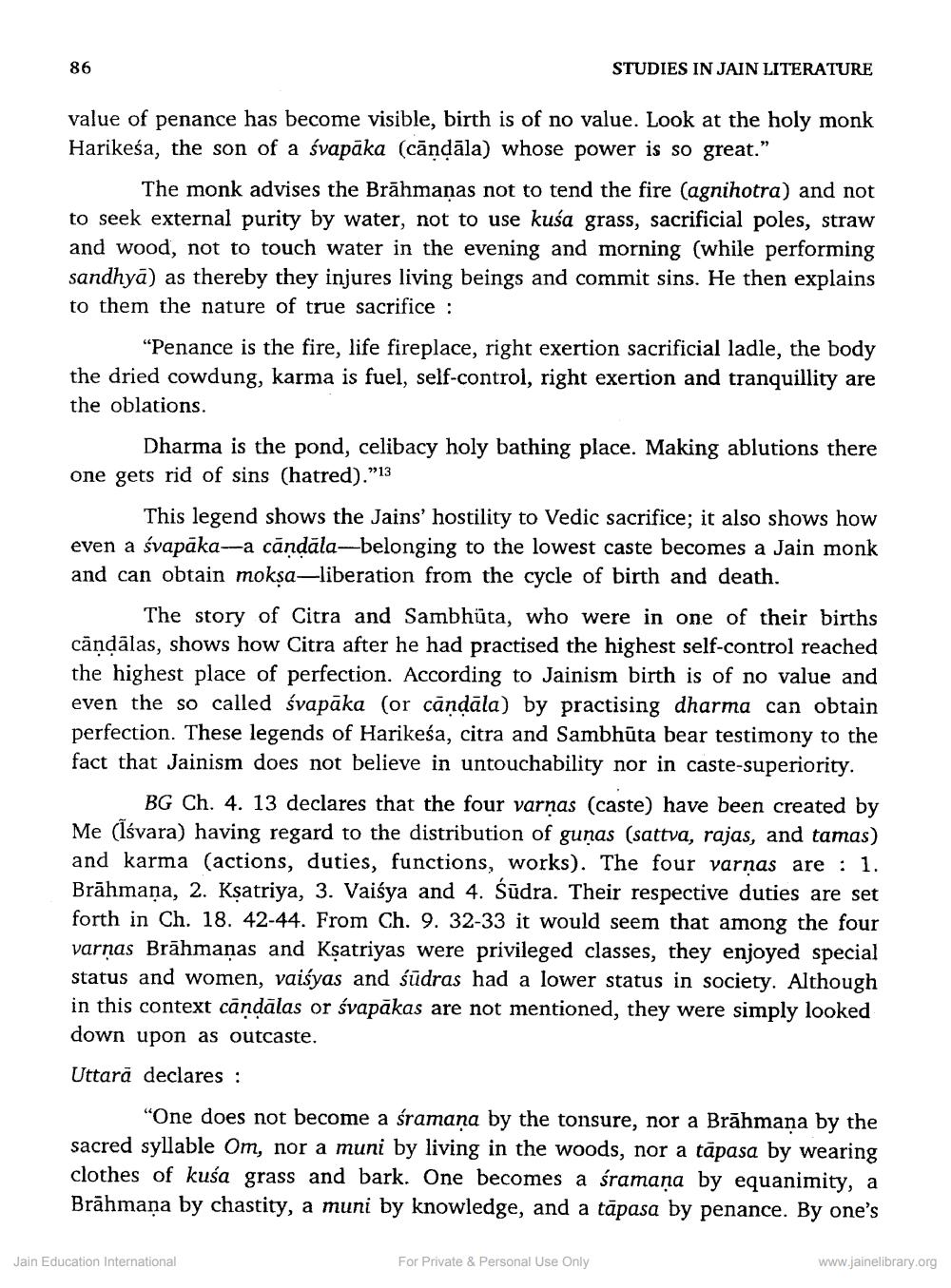________________
86
STUDIES IN JAIN LITERATURE
value of penance has become visible, birth is of no value. Look at the holy monk Harikeśa, the son of a svapāka (cāndāla) whose power is so great."
The monk advises the Brāhmanas not to tend the fire (agnihotra) and not to seek external purity by water, not to use kuća grass, sacrificial poles, straw and wood, not to touch water in the evening and morning (while performing sandhyā) as thereby they injures living beings and commit sins. He then explains to them the nature of true sacrifice :
“Penance is the fire, life fireplace, right exertion sacrificial ladle, the body the dried cowdung, karma is fuel, self-control, right exertion and tranquillity are the oblations.
Dharma is the pond, celibacy holy bathing place. Making ablutions there one gets rid of sins (hatred)."13
This legend shows the Jains' hostility to Vedic sacrifice; it also shows how even a śvapāka--a candāla-belonging to the lowest caste becomes a Jain monk and can obtain moksa-liberation from the cycle of birth and death.
The story of Citra and Sambhūta, who were in one of their births cāņdālas, shows how Citra after he had practised the highest self-control reached the highest place of perfection. According to Jainism birth is of no value and even the so called śvapāka (or candāla) by practising dharma can obtain perfection. These legends of Harikeśa, citra and Sambhūta bear testimony to the fact that Jainism does not believe in untouchability nor in caste-superiority.
BG Ch. 4. 13 declares that the four varnas (caste) have been created by Me (īśvara) having regard to the distribution of gunas (sattva, rajas, and tamas) and karma (actions, duties, functions, works). The four varnas are: 1. Brāhmana, 2. Ksatriya, 3. Vaiśya and 4. Śūdra. Their respective duties are set forth in Ch. 18. 42-44. From Ch. 9. 32-33 it would seem that among the four varnas Brāhmaṇas and Ksatriyas were privileged classes, they enjoyed special status and women, vaiśyas and śūdras had a lower status in society. Although in this context candālas or svapākas are not mentioned, they were simply looked down upon as outcaste. Uttară declares :
"One does not become a śramana by the tonsure, nor a Brāhmana by the sacred syllable Om, nor a muni by living in the woods, nor a tāpasa by wearing clothes of kusa grass and bark. One becomes a śramaņa by equanimity, a Brāhmana by chastity, a muni by knowledge, and a tāpasa by penance. By one's
Jain Education International
For Private & Personal Use Only
www.jainelibrary.org




